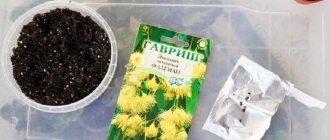What are the beneficial properties of bay leaf?
Dear friends! Bay leaf not only gives the dish a pleasant aroma and piquant taste, but also has beneficial properties.
- helps cope with inflammation and destroy bacteria;
- calms;
- strengthens the body's immune system;
- accelerates recovery during flu and colds;
- has a diuretic effect;
- improves the condition of facial skin;
- prevents the development of diabetes;
- eliminates bad breath;
- improves digestion;
- normalizes blood pressure;
- reduces the intensity of the allergic reaction;
- promotes faster weight loss.
- Individual intolerance to laurel can cause an allergic reaction;
- consuming laurel during pregnancy can cause premature birth and, in the early stages, miscarriage;
- for diseases of the liver and cardiovascular system, laurel can lead to deterioration of well-being and weakness;
- consuming laurel and plant-based solutions can lead to bleeding.
Laurel seeds - healing properties
Laurel is primarily considered a spice plant. Almost all parts of the tree are used for this purpose: fresh and dried leaves, fresh fruits, seeds, leaf powder and bay oil. It is believed, however, that the fruits have a more pronounced healing effect than the leaves. For safe internal use, usually take no more than ten grams of leaves per dose, and exactly half as much fruit - 5 grams. Deviation from the norm may cause vomiting. The fruits (seeds) of laurel have the following therapeutic effects: • treat chronic bronchitis • strengthen the stomach • cleanse blood vessels • treat pinched nerves • relieve fatigue and muscle pain • treat ear pain and help with ringing in the ears • relieve headaches • have beneficial effects for epilepsy • relieve pain in traumatic edema • relieve pain in the joints • are used to treat cholecystitis • treat urolithiasis
To treat pain, bay fruits are mashed and the juice and pulp are used. The juice is dropped into the ears or rubbed into a sore spot. A medicinal mixture is prepared from the fruit pulp and flour in the form of a paste, which is used to lubricate sore joints or swelling. To relieve headaches and epilepsy, use a wine tincture of bay leaves and fruits. A bandage with the pulp of a mashed fruit or crushed bay leaf not only neutralizes insect poison, but even saves you from a snake bite. Both leaves and fruits can be taken orally for poisoning. In addition, bay berries are an excellent anthelmintic.
Read also: Spring processing of currants and gooseberries
A rich, rich oil is obtained from the berries of the bay tree. It, like the paste, is used externally to treat joints, bruises and sprains. Laurel oil is included in medical preparations - medicinal ointments, the basis for the production of candles and balls. As a good insecticide and antiseptic, bay oil is used in antiseptic soap.
02/24/2018, 15:45 Articles and materials, Floriculture Author: Anastasia Romanova
Bay tree is used in interior design, landscaping street flower beds and creating decorative compositions. Laurel differs in leaf shape and size and is suitable for growing both indoors and in open ground.
Laurel is used in pharmacology; leaves and fruits are used, from which extracts, infusions and oils are subsequently made. The plant is widely used as a diuretic, relieves flatulence, intestinal colic, laurel esters relieve depression. Laurel leaves are used as a seasoning.
Laurel varieties for growing on a windowsill
To grow a bay tree at home, you need to choose the right variety of bay leaf that is suitable for home cultivation. Otherwise, the work will go down the drain.
Are you growing laurel on a windowsill?
Not really
Noble laurel
The first variety that I paid attention to was the noble laurel. This plant variety is native to the Mediterranean. The length of the laurel can reach 18 meters. Dark green leaves are arranged alternately on the petioles.
Laurel laurel is used more often than other varieties in cooking.
. It is this plant that many housewives add to dishes to add piquancy and spicy aroma. An oil is obtained from the fruits of the noble laurel, which is used for medicinal purposes.
Laurus of Canary (Azores)
Laurel Canary is known for the fact that its leaves have a bitter taste. The plant is often used in European dishes. Fresh leaves need to be dried in a dark place. I noticed that in dry leaves there is no bitterness, but the spicy aroma remains. I didn’t notice any difference between this and the previous variety. In both cases, the dishes acquire a pleasant aroma.
Common laurel
Common laurel can not only be used in cooking, but also complement the interior of the home. The plant is an evergreen tree or shrub. The leaf blades of the laurel are leathery to the touch and have a slightly wavy edge.
Thanks to the fact that I provided the plant with good care, the plant grew in hot weather with low air humidity. This is despite the fact that in such conditions it is extremely undesirable to grow common laurel. The seller of one of the seed stores told me about this later.
Watch how to revive a bay tree that is about to die:
What you need to grow laurel from seeds
Before I started growing laurel at home, I carefully studied the information about the plant and found out what rules needed to be followed. It turned out that the easiest way to grow it is from seeds.
Friends, not only bay leaves can be grown from seeds. I told you how to plant dill at home. This way you can cook delicious and aromatic dishes with homemade herbs even in winter.
Choosing the optimal place in the house
To plant bay leaves at home, you need to choose the right place in the house. The plant can adapt to both dark and bright places in the house. From my experience I can say that my laurel stood in different parts of the apartment. I didn't notice any difference. In the summer, on the advice of the seller from the seed store, I took the plant out onto the balcony.
Selection and preparation of containers
Any container is suitable for planting. It all depends on your preferences. But it is better to choose containers made from natural materials - clay and ceramics. Wooden containers are not moisture resistant enough, and plastic containers do not allow enough air to pass through, causing the plant to “suffocate.”
I preferred a ceramic pot. They are easier to find in stores than clay counterparts. And the appearance of the former is more attractive. For me this was the determining factor.
The height of the pot should not be less than 15 centimeters, since the root system of the laurel needs space. When I replanted an adult plant, I used a pot 10 centimeters larger. I made 5 holes at the bottom of the container so that water could drain and the soil would not become waterlogged.
Friends! As an analogue to laurel, try growing another herb. I described how to grow rosemary at home; this docile plant is suitable even for a novice gardener.
Plastic pots do not allow air to pass through well
Soil selection
The ideal option for growing laurel at home is light soil that allows moisture to pass through well. Soil intended for cacti will do. In flower shops I found only universal primer. That's where I chose.
I have grown several types of laurel. I planted one plant in store-bought soil, the other in soil I prepared myself from river sand and leaf soil.
You can use coal, peat or humus as a nutrient component. I chose the most affordable option and fertilized the soil with coal. I laid out pebbles and expanded clay on the container. The drainage base nourished the plant when I forgot to water the laurel.
For laurel, soil suitable for cacti and succulents is suitable.
Necessary conditions: lighting, air humidity, temperature
The most important condition for successfully growing laurel at home is maintaining the temperature regime. Laurel is whimsical about changing it. The plant grows well in the fresh air. Therefore, in the summer, I took it out to the balcony. In winter, I placed pots of laurel on windowsills on the north side. I did not forget to regularly ventilate the room to provide the plants with fresh air. Once every 2 weeks I sprayed the bay leaves with warm water from a spray bottle. Sometimes I placed the plant under the shower.
Lighting is not the most important factor for laurel. The plant grows well in both light and dark corners of the house. The best placement option is on the windowsill.
The optimal place for growing laurel is a windowsill
Seed preparation
To successfully grow laurel at home, you need to pay special attention to preparing the seeds. It is better to plant the plant in February or March. I planted my first laurel in the middle of the first spring month.
Before planting, I germinated the seeds of the plant. To do this, I placed them in a solution of potassium permanganate for 3 days. This made it possible to remove harmful microorganisms and accelerate seed germination. Then I wrapped the base in a damp gauze bandage and sent it to a dark place for 4 days.
Author's note
Natalia Papanova
Blog author
Gauze or other thin cotton cloth should be moistened daily with water at room temperature.
Sowing rules
After the first shoots appeared, I planted the seeds in the soil. The process takes 3-5 minutes. First, I formed a depression 1-1.5 cm deep, then placed the seed in it and covered the container with cling film. Every day I removed the film to ventilate the plant. I finally removed it when the seeds sprouted. At first I paid special attention to the watering regime.
Author's note
Natalia Papanova
Blog author
For irrigation, you can only use settled water at room temperature. The plant will not tolerate exposure to cold liquid and will soon die.
Have you tried planting laurel seeds?
Not really
Seedling care
The seedlings do not require special care. I watered the plant regularly and monitored the lighting. Before ventilating the room, I removed the laurel from the windowsill to prevent exposure to drafts.
When to replant seedlings
Growing laurel from seeds is a long process. The seed grows within 5-6 months. I transplanted the plant into a larger container 7 months after planting. This can be done later. The best option is 8-9 months after planting.
If you don't want to grow laurel, try planting basil at home, it grows well on the windowsill and is an excellent seasoning.
Picking rules
As soon as the laurel seeds sprouted, I thought about picking. The process was not particularly difficult. I laid out a drainage base at the bottom of a pre-prepared container. Then I filled it with universal soil mixed with high-moor peat. After replanting, I watered the plant generously with water, the temperature of which was 3 degrees above room temperature. Compliance with the last condition is very important, so I used a thermometer.
After the pick, the laurel was in “quarantine” mode for 2 weeks. I prevented direct sunlight from hitting the plant.
Transplanting a plant
Young plants must be replanted every year until they reach five years of age. Older specimens need to be replanted no more than once every 3-4 years. The best time for the procedure is the end of spring, when the plant comes out of the dormant period and begins to actively develop.
Bay leaves are not picky about the composition of the soil and can thrive in any substrate purchased in specialized stores. But if you have the desire or opportunity to make soil for the laurel yourself, then you need to take the following ingredients:
- turf soil;
- manure humus;
- earth from weathered leaves;
- peat;
- river sand.
All component parts are taken in equal proportions, mixed into a single substrate and used for planting bay leaves.
To transplant the laurel into a new container, take a pot 1.5-2 cm larger in diameter than the previous one.
- Drainage made of expanded clay, crushed stone or broken brick is poured into the bottom of the pot. Drainage should be at least 1/3 of the volume of the pot.
- The container is filled halfway with earth.
- The plant is carefully removed from the previous pot, and the soil is shaken off from the roots.
- The laurel is planted in a new container, covering the roots with soil to the top of the pot.
- The top layer of soil is compacted slightly.
- Water the bay leaf abundantly.
Caring for an indoor bay tree at home
Even a beginner can handle caring for laurel at home. In order for the plant to grow and be happy, I followed simple rules and provided proper care for it.
Illumination
Lighting is not the determining factor in successfully growing laurel at home. The plant grows in both dark and light areas of the home. However, it is preferable to choose well-lit rooms. I grew laurel on the windowsill. During the period of greatest solar activity, roller blinds were lowered to protect the plant from direct sunlight.
Temperature
The bay tree can easily tolerate temperature changes. It grows well both at +10-15 degrees and at 20-24. But the temperature should not exceed 24 degrees. Otherwise the plant will die.
Air humidity
Without the proper level of humidity, the laurel may die. In winter, the air is dry, and therefore I regularly ventilated the plant during the winter season and irrigated it with water at room temperature from a spray bottle. Sometimes I placed the laurel under the shower. Wet procedures were carried out once every two weeks.
How to water
I watered the laurel every time the top layer of soil dried out. The water should be at room temperature or 2-3 degrees higher, and must be settled. I paid special attention to watering in spring and summer, making sure that the soil did not dry out. In the fall, the frequency of watering was reduced, and in the winter, it was strictly limited.
You need to water the laurel as the top layer dries.
Top dressing
I fed the laurel every month with mineral fertilizers. I purchased them at gardening stores. I paid special attention to feeding during the growing season.
If you are a fan of home-grown spices, learn how to grow green onions on your windowsill. What could be better than a delicious salad with aromatic herbs on a cold winter evening?
Features of transplantation
Transplanting laurel into a larger container does not require any special skills and abilities and takes an average of 15-20 minutes. I chose pots 5-6 cm wider. I transplanted a ball of earth into them, and then filled the container with the missing soil. After transplanting was completed, watered the plant abundantly.
See the advice of an experienced gardener: how to make 5 from 1 laurel bush
When is a transplant needed?
Laurel does not need frequent replanting. I did the procedure once every two years. This is enough, since the plant, even if all the subtleties are observed, grows slowly.
An adult plant needs to be replanted every 4 years.
Features of pruning laurel to form a bush
Circumcision is performed for decorative purposes. The procedure must be followed so that it acquires the desired shape. I pruned the laurel in early spring. During the entire period of growing the plant at home, I carried out the procedure once. Since the growth of laurel takes a long time, the crown does not recover quickly after pruning.
Preparing seeds for planting
Growing bay laurel from seeds also involves some preparatory measures for the seed.
For example, the seeds of this plant do not tolerate drying and retain good germination only for 3-5 months, and then only when stored in a cool and damp room.
Before directly planting seeds in the ground, you should free them from the shell, otherwise you will have to wait a long time for germination.
It is best to sow laurel in separate pots with a volume of at least one liter or directly in open ground (in a permanent place).
Usually the seeds germinate from April to August, but there are cases when they begin to germinate only in January, and then in the presence of severe frosts the seedlings immediately die.
To increase the germination of seeds, you must adhere to several simple rules: remove the fruits from the tree in November, keep the seeds moist but not wet until planting (no more than 2-3 months), and be sure to remove the skin before planting in the ground.
The germination process can also be accelerated by pre-soaking the seeds in a weak solution of potassium permanganate for 2-3 days, after which the oily pericarp should be cleaned.
Reproduction of laurel tree at home
The easiest way to propagate is through seeds. It does not require effort or skill and takes 10-15 minutes. Friends, but there are other methods of propagation: by dividing rhizomes and cuttings and seeds. I chose to propagate laurel by seeds.
If you are thinking about propagating a bay tree, you may be interested in learning about other plants for culinary masterpieces. I told you how to plant sorrel at home. It's simple and very convenient, fresh herbs for borscht at any time of the year!
By dividing the rhizome
The bay tree should be propagated in this way in the fall or early spring. Viable roots are required for propagation. Having divided them, they need to be transplanted into a container with previously prepared soil. After planting the roots, the soil must be moistened with settling water 3-4 degrees above room temperature.
Seeds
Laurel seeds are large, oval-shaped. They can reach 2 cm in length. They do not like drying out. Seeds will germinate only if stored properly, which does not exceed 5 months.
Before the procedure, I freed the seeding material from the membranes. Then she placed the seeds in a pot, covered them with soil and watered them generously with warm water. When I replanted the laurel for the first time, the seeds of the young plant sprouted in May. If the seeds germinate in January, the tree will most likely die due to low temperatures.
In the first year I did not feed the plant. I started adding mineral fertilizers to the soil from the second year of life. I watered the bay tree once every 2 weeks after the top layer of soil had dried.
By cuttings (branches)
I tried to propagate the bay tree from cuttings. But for me this method turned out to be labor-intensive. I cut cuttings 8-10 cm long before the shoots began to grow in mid-March. Then I rooted the cut parts of the plant in warm leaf soil with moss. To prevent moisture from evaporating, I covered the laurel cuttings with a glass jar. It is important to maintain the temperature between 22 and 28 degrees. Failure to comply with the regime is fraught with the death of the plant.
After the first leaves appeared, I transplanted the laurel into the soil mixture. I watered the plant twice a week and sprayed the leaves with a spray bottle.
Friends, if you don’t want to propagate laurel from cuttings, look at how to grow ginger at home. This plant does not require special efforts or skills - your desire is enough.
See the advice of an experienced gardener and find out whether the laurel is whimsical
Laurel sowing scheme
Planting laurel seeds is a relatively simple process. Having prepared the soil according to one of the above schemes, you need to place the seeds in it to a depth of 1-2 cm and, having planted them, wet the earthen ball well.
Next, the container with the crops is covered with glass or transparent plastic film (it should not touch the ground) and placed in a warm place.
When the first shoots appear, the “capes” are removed and the soil moisture continues to be monitored, since even slight drying can significantly slow down the growth of seedlings.
As soon as the plants have the first two leaves, they need to be planted according to a 2 x 2 pattern in open ground or in separate small pots.
Diseases and pests
Laurel is resistant to pathogens. In rare cases, the plant may be affected by sooty fungus.
It does not affect the viability of the bay tree. The plant continues to grow, but loses its decorative properties. A change in the color of the leaves indicates that the laurel is infected with a fungus. A red coating appears on them. It is quite simple to cure laurel: you need to treat the surfaces of the leaves with a weak soda solution 2 times a week: dilute 4-5 tbsp in 1 liter of water. sodium carbonate.
Pests that can harm the plant are:
- scale insects;
- mealybug;
- spider mite
Pests are difficult to eliminate. The leaves of the plant need to be treated with a soap solution. The greater its concentration, the better. You need to dilute 3-4 tbsp in 1 liter of water. soap or dish detergent.
Fighting scale insects requires a lot of effort. Because the pest lays hundreds of eggs in the soil. Use a soap solution to treat not only the leaves of the plant, but also the surrounding surfaces: window sill, surface of the pot. To prepare, you need 15 g of liquid soap, 10 ml of denatured alcohol and 1 liter of warm water.
How to store bay leaves
Bay leaves can be used in cooking. But it is unrealistic to use all the leaves of the plant at once, so you need to know how to store them at home.
By the way, there is another seasoning suitable for use in cooking and in folk medicine. Read how to properly store basil[/link_webnavoz]. And don't forget to tell your friends!
Fresh
Fresh bay leaves do not last long, no more than a week. Before putting them in the refrigerator, I carefully examined the parts of the plant. The leaves should not be damaged or stained. I stored the leaves in the refrigerator for 3 days. Then I washed the plants under running water, collected them in bunches and sent them to dry on the windowsill. I opened the window slightly to allow fresh air to flow. The laurel leaves dried to the required consistency in 3 days.
Dried
After drying, I stored the bay leaves in a bunch for another month. Then she placed the plants in bags and sent them to be stored with the rest of the seasonings in a dark place.
Frozen
I stored some of the bay leaves in the freezer. To do this, I put the plant dried on the windowsill into bags. In the freezer, the spice retains its taste and aromatic qualities most fully. The storage period in the chamber is not limited.
Proper storage is needed not only for bay leaves! Level up your gardener level, [link_webnavoz]I wrote how to preserve onions at home for the whole winter so that they do not freeze or freeze.
Look at the advice of an experienced gardener on measures to prevent bay tree diseases
FAQ
Natalia Papanova
Blog author
Ask your question
Before planting a bay tree at home, I studied many questions. I was able to identify the most popular and important ones.
How long does it take to grow bay leaves at home?
At home, if all conditions are met, bay leaves can grow for 15 years. An adult plant needs to be replanted once every 4 years.
Where is laurel used?
I have used bay leaves for many purposes. I prepared a decoction from dried plants to boost immunity, and took a bath with laurel extract 2 times a week. When I felt unwell and tired, I added the leaves to tea. I regularly performed aromatherapy with laurel. She helped me cope with insomnia. In addition, the plant extract has antiseptic properties.?
Camphor laurel (tree)
One of the popular varieties of laurel plants that are grown at home or in garden plots is camphor laurel (another name is camphor tree). Strictly speaking, in the scientific classification this plant belongs to the species of the genus Cinnamon. However, its belonging to the Laurel family gives grounds for amateur gardeners to classify the crop as a variety of laurel.
Another representative of the Laurel family is camphor laurel.
The regions of Southeast Asia - Taiwan, southwestern China, some islands of Japan, Korea, and Indonesia - are considered to be the birthplace of camphor laurel. Subsequently, this subtropical evergreen plant spread to many countries with warm, humid climates. In the second half of the 18th century, the camphor tree appeared on the Caucasian coast of the Black Sea. Initially it was grown as an ornamental plant in gardens, parks and estates. In the 19th century, the use of culture for industrial purposes began.
The main beneficial quality of the plant is its essential oil content, more than 90% of which is camphor. This substance has medicinal properties and is used in the manufacture of various medications. Camphor ointments and tinctures are used to cure rheumatism, arthritis, diseases of the heart, blood vessels, and disorders of the central nervous system. The largest amount of camphor is found in the woody parts of the laurel - the trunk and branches. However, essential camphor oils are also contained in the leaves, flowers, and fruits of the plant.
Important! The leaves of the plant are also used as spicy seasonings in the preparation of various dishes.
Camphor laurel is valued for the presence of a large amount of camphor, which is used in medicine and cooking.
The camphor tree is distinguished by its growth rate; it can reach a height of 20-50 m with a massive trunk up to 5 m in diameter. Such plants love warmth and moisture and develop well in subtropical regions. In addition to camphor extraction, they are used to create park and garden decorative compositions and hedges. However, powerful root systems can cause the destruction of various sewer, drainage, and communication systems. In addition, the foliage of the tree contains substances that deteriorate the quality of fresh water in soils and reservoirs.
There are decorative forms of camphor tree that can be grown indoors or in a summer cottage. The technique for growing such a crop is generally similar to the cultivation of noble or Azorean laurel, but requires more fresh air. For propagation, the methods of planting seeds and semi-lignified cuttings or layering are equally successful. The optimal soil composition for camphor laurel is a mixture of two parts turf and one part each of earth, sand, peat, and humus. The plant usually blooms in late May, early summer, and bears fruit in November.
Camphor laurel is often grown for decorative purposes - to create compositions and hedges.
I will highlight the important
- Even a beginner can grow laurel at home. No special skills or abilities are required.
- At home, the plant can grow for up to 15 years.
- A seedling needs to be replanted within the first two years, an adult laurel - within 4.
- Any containers are suitable for growing plants, but it is better to choose containers made from natural materials.
- Laurel is unpretentious and grows well in both dark and light places.
- The plant can be propagated by seeds, cuttings and by dividing the rhizome.
- You can store dried laurel leaves in the refrigerator, pantry or freezer. In the latter case, the shelf life of the spice is unlimited.
- The scope of application of bay leaves is extensive: from traditional medicine to cooking and aromatherapy.
Friends, have you ever grown a bay tree at home? Share your experience in the comments.
Propagation by cuttings
Propagating bay leaves at home using cuttings is much more difficult than the previous method. Late spring and early summer are the ideal time for cuttings. The basis is taken from mature shoots of the laurel tree, which are at least a year old.
Procedure for preparing and planting cuttings:
- Lower branches 8-9 cm long are carefully trimmed diagonally with garden shears;
- The leaves below are completely removed, the top ones are cut in half;
- Cuttings are planted 2 cm deep into a prepared substrate of soil and sand;
- The container with seedlings is covered with a bag or plastic bottle. Once a day, the containers are ventilated and irrigated with water from a spray bottle.
After a couple of months, the cuttings take root if conditions are favorable. Waterlogged soil, like drought, has a detrimental effect on the root system.
Read also: How to fatten geese before slaughter
You can buy an already rooted cutting at a gardening store, which will significantly save time and effort. When purchasing cuttings, look at the appearance of the plant. Elastic green leaves without spots are a sign of a healthy plant. It is better to discard overdried specimens.











